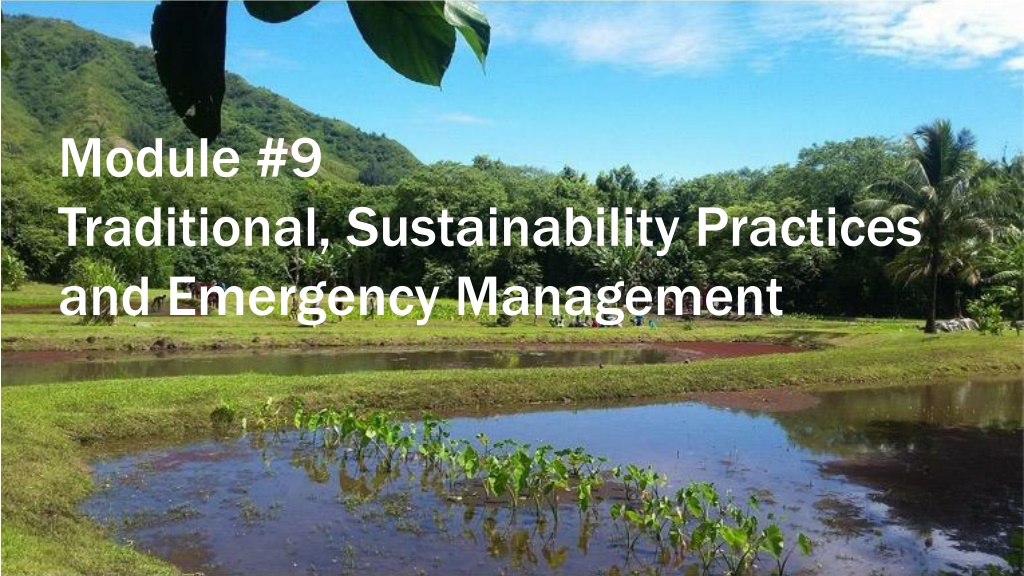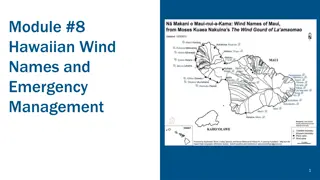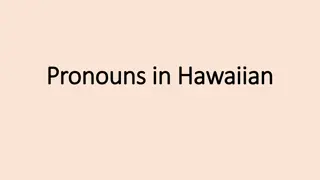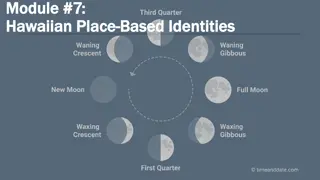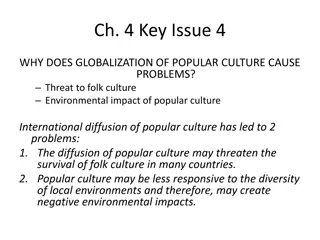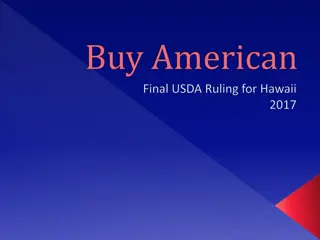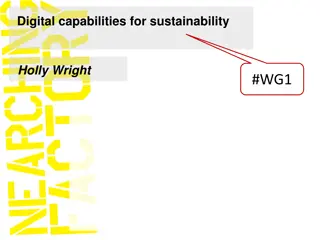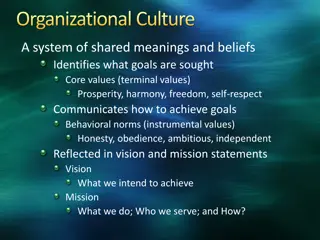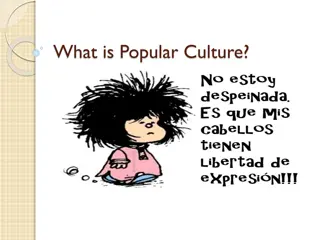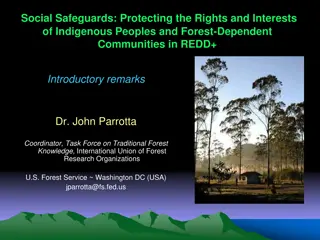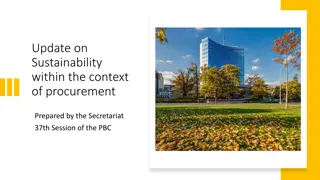Traditional Sustainability Practices in Hawaiian Culture
Explore the Hawaiian worldview, the deep connection between man and land, and traditional practices that support sustainability during emergencies and non-emergencies. Journey through cultural protocols, storytelling, and understanding the genealogy of the Hawaiian islands.
- Hawaiian culture
- Sustainability practices
- Emergency management
- Traditional knowledge
- Cultural protocols
Download Presentation

Please find below an Image/Link to download the presentation.
The content on the website is provided AS IS for your information and personal use only. It may not be sold, licensed, or shared on other websites without obtaining consent from the author. Download presentation by click this link. If you encounter any issues during the download, it is possible that the publisher has removed the file from their server.
E N D
Presentation Transcript
Module #9 Traditional, Sustainability Practices and Emergency Management
Learning Objectives To gain appreciation for the Hawaiian worldview. Develop an appreciation for ina (land). Develop a deeper understanding of ike hawai i (Hawaiian knowledge). To understand the connection between man and land. Identify the cyclical connection through story & traditions. To be aware of traditions that can aid in sustainability practices during times of emergencies and non-emergencies. 2
Module Sections Cultural protocol Station 3: Tour of the Kahawai (Stream) Introductions Case Study: connecting different worldviews Connecting to Mo olelo Additional references Mo olelo of H loa Mahalo Oli Re-tell the Mo olelo Mo olelo & Critical Dialogue Group Activity Station 1: Kalo (Taro) Plant Station 2: Information & benefits of Kalo (Taro) 3
Cultural Protocol Elder and/or leader to start beginning protocol to have everyone on the same page. Words to E H Mai (By: Edith Kanaka ole Kanahele) E h mai ka ike mai luna mai O n mea huna no eau o n mele E h mai, e h mai, e h mai (x3) 4
Introductions Each person introduces themself and where they are from in the Hawaiian language. Each person explains what connects them to this place. Follow below: Aloha. O (first & last name) ko u inoa. No (place of residence) mai au. What makes me pili to Hawaii? 5
Connecting to Connecting to Mo Mo olelo olelo
Mo Mo olelo olelo O O H loa H loa The genealogy of the Hawaiian islands. Kahiko (husband) & K p lanakehau (wife) had a son, W kea. K kalani ehu (husband) & Kahakauakoko (wife) had a daughter, Papah naumoku or Papa. W kea lived with Papa. The eldest island and their eldest child, Hawaii, was born. Maui, Kanaloa (also known as Kaho olawe) was born soon after. Papa decided to leave Hawaii and travel to Tahiti. W kea took a new wife, Ka ula. They had a child, L na ika ula or L na i. W kea took another wife, Hina. They also had a child, Molokainuiahina or Moloka i. Papa returned from Tahiti and became upset over W kea s two new wives. Papa takes on a new husband, Lua. Born to them was Oahulua or O ahu. Papa eventually returns to W kea and they end up having Kaua i, Ni ihau, Lehua, and Ka ula. 7
Mo Mo olelo olelo O O H loa H loa W kea and Ho oh k kalani had a premature birth and named him H loanakalaukapalili. They buried him outside their house and from that spot grew a taro plant. This plant is known to be the source of all taro plants in Hawaii. This couple had another child and they named him H loa. H loa lives and becomes the first ancestor, first man, first chief of the Hawaiian race. Both the taro plant and the land are older siblings to the Hawaiian people just the same as the Hawaiian people are younger siblings to the taro plant and land. Therefore, the younger sibling always takes care of the older sibling and in return the older sibling takes care of the younger sibling. This relationship is shown in how Hawaiian people see land. The land is not owned but rather should be taken care of and in return, the land will take care of its people in all ways through sustenance: physically, spiritually, and mentally. 8
Retell the Retell the Mo Mo olelo olelo Where does the story take place? Who are the people involved? What was one thing from the mo olelo that you remembered in the: Beginning Middle End 9
Mo Mo olelo olelo & critical dialogue & critical dialogue Why is the mo olelo important to Hawaiian people? How does this mo olelo connect to sustainability? What are other examples from other native cultures that are similar? How does mo olelo help to understand another worldview? What are other dynamics to note regarding mo olelo of a native culture and modern day management plans? 10
Group Activity Group Activity
Group Activity Instructions Group Activity Instructions Get in groups of 4 or 5 people. Learn each section of the station. Present in front of the group Each person will offer information on at least part of the kalo plant. In the presentation to include: The Hawaiian name Where it is located What are the uses for it How it connects to the bigger picture of the culture. As a group, discuss how this plant can be used during times of disaster. 12
Station 1: Station 1: Kalo Kalo (Taro) Plant (Taro) Plant Learn about the kalo plant. The Hawaiian name to the parts. Where the part of the plant is located. What the uses are for. Fill-in a blank space picture of names of the parts of the kalo plant. 13
Part of the Part of the Kalo Kalo (Taro) (Taro) Lau: leaf, cook food inside Piko: middle, belly button, center of man H : stalk, breath of man oh : baby shoots, regeneration Kalo: taro, sustenance for mind/body/spirit Huluhulu: roots, genealogy/cosmology Huli: baby roots replanted, future generations 14
Group Activity Group Activity
Station 2: Information & Benefits of Station 2: Information & Benefits of Kalo Kalo (Taro) (Taro) Learn the information & benefits of Kalo. Understand the different varieties of kalo. Understand the location that the kalo plant can be found in. Learn the many different uses for the kalo plant. Learn at least one use for each section of the kalo plant. 16
Information & Benefits of Information & Benefits of Kalo Kalo (Taro) (Taro) 300+ varieties of kalo known to early Hawaiians. Wet/dry varieties Found in lowland/upland Used for many different reasons: Medicine: stem of the leaf can be rubbed on an insect bite; Raw rootstock stops bleeding; mashed poi used as a bandage. Paste: glue pieces of kapa together. Fishing: Used as bait. Dye: juice can be used to dye material. Many different colors. Food: poi to eat now, pa i ai to eat in 2-4 weeks, dried kalo to eat past 4 weeks, kulolo to eat as dessert. 17
Station 3: Tour of the Station 3: Tour of the Kahawai Kahawai (Stream) (Stream) Understand the water system surrounding the lo i. Trace the water system from the mountains to the sea. Understand the use of each section and the benefits that goes along with it. 18
The stream surrounding the The stream surrounding the Lo Lo i i Po owai: The head of the water leading into irrigated ditches that flow into the lo i. The water is control from the po owai. M nowai: Rocks slow the water down to help channel it to different areas. Makawai: Water enters and exits from each lo i. Auwai: Carries the water from the stream to the lo i. Kahawai: The source of water begins in the mountains and provides water for the lo i. Ho i: Water leaves the lo i and returns to the kahawai. 19
Group Activity: Gather to share Group Activity: Gather to share What are some things that stood out to you or questions you have about what you shared? What does this mean for your work? What changes might you need to make this example? What kinds of support might you need? How can all of us here today ensure that the information shared is used and refined to have a positive impact on your emergency management system? 20
Case Study Case Study Cho, John J., Roy A. Yamakawa, & James Hollyer. Hawaiian Kalo, Past and Future. Sustainable Agriculture, SA-1. Feb 2007, 1-8. Read the article and answer the questions as a group. Questions to answer: What are the key ideas of this article? What examples can be incorporated in to possible solutions for sustainability practices and climate change agricultural stability? Please use examples from this article. How does Indigenous knowledge speak to sustainable practices? 21
Oli Mahalo Thank Thank you you chant chant in Hawaiian Language: in Hawaiian Language: English Translation: English Translation: Uhola ia ka makaloa l P ai i ke aloha l K ka i ia ka h loa l P wehi mai n lehua Mai ka ho oku i a ka h l wail Mahalo e Ke Akua* Mahalo e n kupuna l e Mahalo me ke aloha l Mahalo me ke aloha l The makaloa mat has been unfolded Food is shared in love The great breath is exchanged The Lehua honors and adores From zenith to horizon Gratitude to God Gratitude to our ancestors Gratitude with love Gratitude with love 22
References: References: Cho, John J., Roy A. Yamakawa, & James Hollyer. Hawaiian Kalo, Past and Future. Sustainable Agriculture, SA-1. Feb 2007, 1-8. Ka pua-Goodyear, Noelani. Rebuilding the Auwai: Connecting Ecology, Economy and Education in Hawaiian Schools. Alternative, Volume 5, Number 2. 2009, 46-77. Kirch, P. V. and D. Lepofsky. "Polynesian Irrigation: Archaeological and Linguistic Evidence for Origins and Development." Asian Perspectives 32, no. 2. 1993, 183-204. Teves, Glenn I. Growing Upland Taro. Molokai Native Hawaiian Beginning Farmer Quarterly July to September 2015. 1-14. 23
